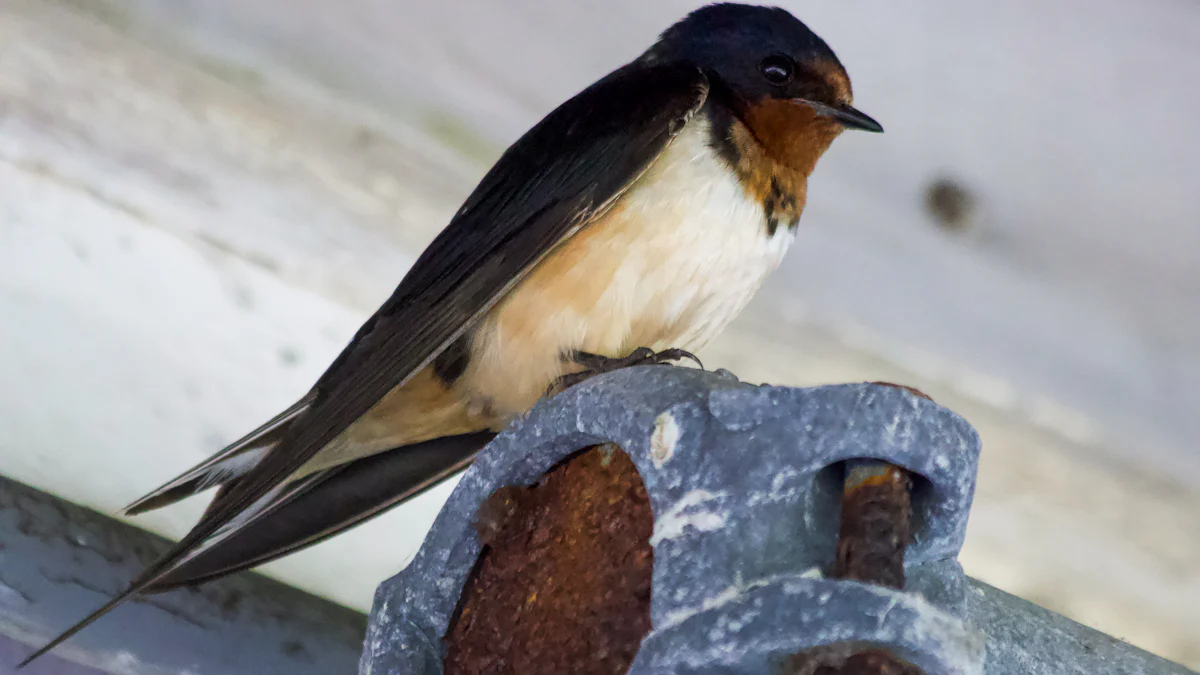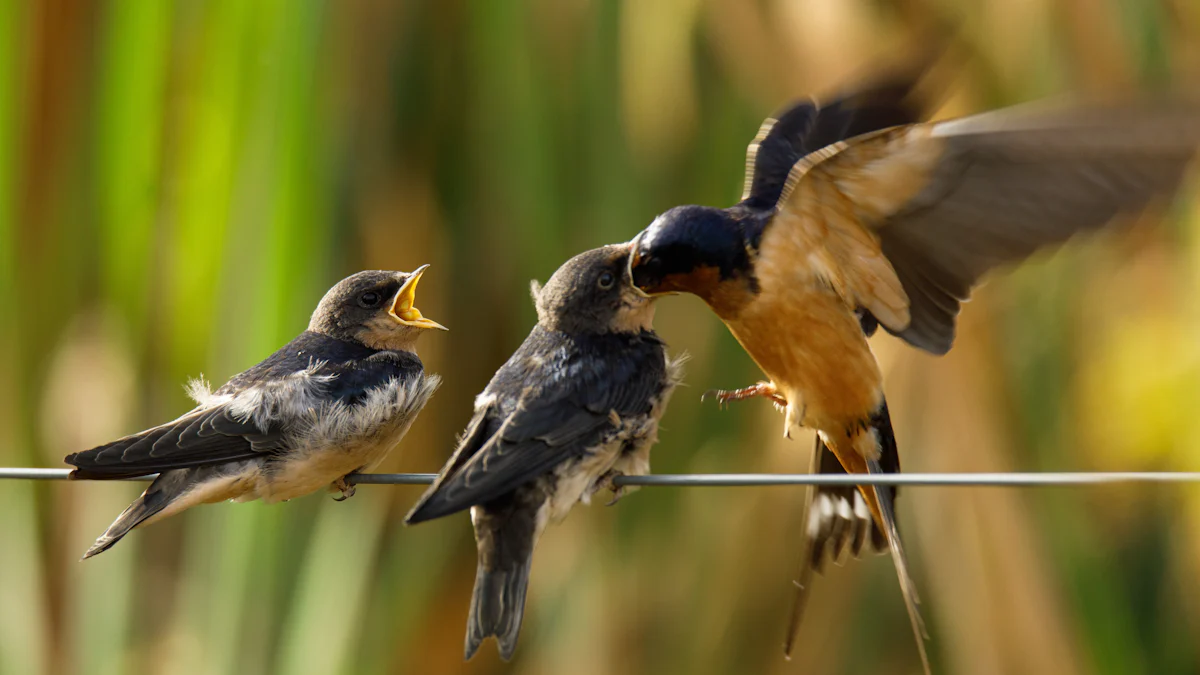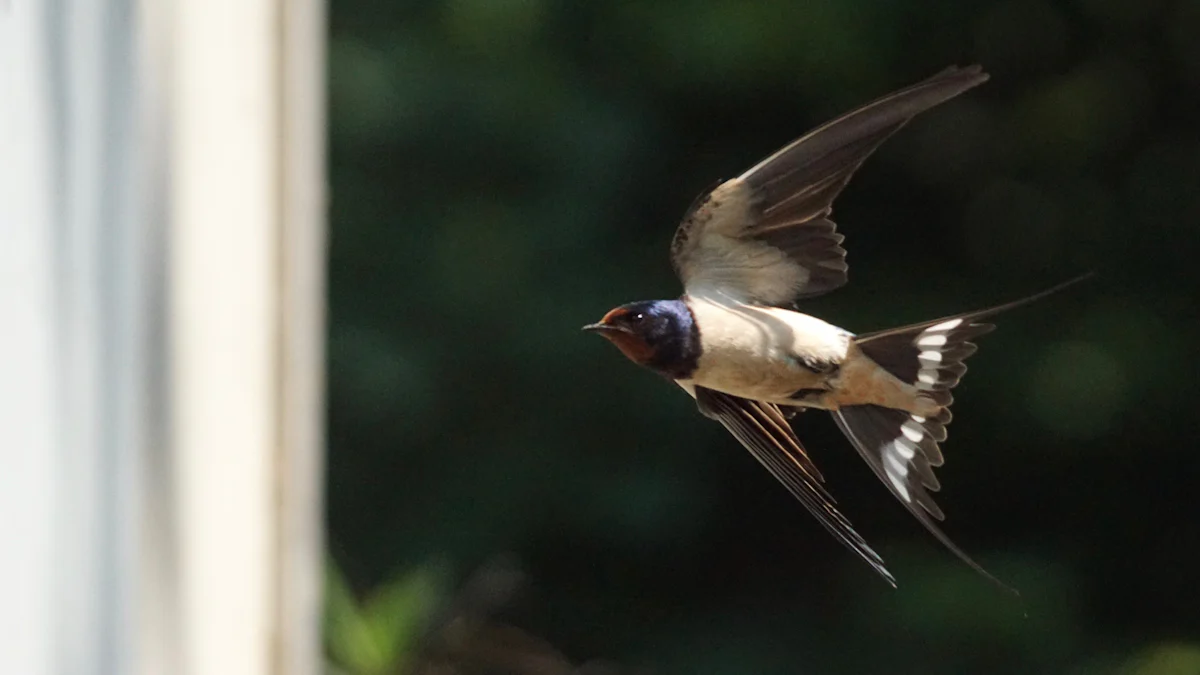
Swallows primarily thrive on a diet of flying insects, which account for 99% of their meals. While Dried Mealworms Birds don’t naturally consume them, these mealworms can be a helpful food source during shortages. They closely resemble the shape and nutritional value of insects, making them a practical supplement for swallows when their typical prey is limited.
Key Takeaways
- Dried mealworms are a nutritious supplement for swallows, providing high protein and healthy fats, especially beneficial during migration and breeding seasons.
- To attract swallows, present dried mealworms in a shallow dish or scatter them in open areas, and consider soaking them in water to mimic the texture of live insects.
- A varied diet is essential for swallows; while dried mealworms can help during food shortages, they should not replace their natural diet of flying insects.
Nutritional Value of Dried Mealworms Birds
Benefits of dried mealworms for swallows
Dried mealworms offer several nutritional benefits that can support swallows, especially during challenging times like migration or breeding seasons. These mealworms are packed with:
- High Protein Content: About 53% protein, which helps swallows grow strong feathers, repair tissues, and maintain energy levels.
- Rich in Vitamins and Minerals: They contain potassium for muscle function, magnesium for energy production, iron for oxygen transport, and B vitamins to boost metabolism.
- Healthy Fat Content: With 28% fat, dried mealworms provide the extra energy swallows need during colder months or when raising chicks.
This combination of nutrients makes dried mealworms a valuable supplemental food source for swallows when their natural diet is scarce.
Tip: Offering dried mealworms during migration can give swallows the energy boost they need to complete their long journeys.
Potential drawbacks of feeding dried mealworms
While dried mealworms are nutritious, they do have some limitations. They lack the variety of nutrients found in live insects, which are a natural part of a swallow’s diet. For example:
- Dried mealworms are lower in moisture compared to live insects, which could lead to dehydration if swallows rely on them too much.
- They may not provide all the micronutrients swallows need for optimal health.
To avoid these issues, it’s best to use dried mealworms as a supplement rather than a primary food source.
Comparing dried mealworms to natural food sources
Swallows naturally consume flying insects, which are rich in protein, moisture, and other essential nutrients. However, dried mealworms can still serve as a practical alternative during food shortages. Here’s a quick comparison:
| Nutrient | Dried Mealworms | Live Insects (Natural Diet) |
|---|---|---|
| Protein | 53% | High but varies |
| Fat | 28% | Moderate |
| Fiber | 6% | Low |
| Moisture | Low | High |
Dried mealworms mimic the shape and nutritional profile of insects, making them an appealing option for swallows. However, their lower moisture content highlights the importance of offering fresh water alongside them.
Note: Swallows in some regions have been observed adapting to mealworms when their usual insect prey is unavailable, showing their versatility in diet.
Feeding Swallows Dried Mealworms

Best ways to present dried mealworms to swallows
Swallows are visual hunters, so presentation matters when offering dried mealworms. To make them more appealing, try soaking the mealworms in water for a few minutes. This rehydrates them, making them softer and closer to the texture of live insects. Place the mealworms in a shallow dish or tray feeder where swallows can easily spot them.
Another effective method is scattering the mealworms on open ground or near areas where swallows frequently perch. This mimics the natural behavior of insects and increases the chances of attracting their attention. If you’re using a feeder, choose one with a flat surface and no high edges. Swallows prefer open spaces for feeding.
Tip: Position the feeder in a sunny spot. The light can make the mealworms more noticeable to swallows flying overhead.
Recommended quantities and feeding frequency
When feeding swallows, moderation is key. Offer small amounts of dried mealworms at a time, around 10-15 per bird. This prevents waste and ensures the mealworms remain fresh. During migration or breeding seasons, you can increase the quantity slightly to support their higher energy needs.
Feed them once or twice a day, preferably in the morning and late afternoon. These are the times when swallows are most active and likely to forage. Avoid overfeeding, as it might discourage them from hunting their natural prey.
Tips for attracting swallows to mealworm feeders
Attracting swallows to a feeder can take some patience. Start by placing the feeder in an area where swallows are already active, such as near open fields or water sources. Adding a small amount of live mealworms alongside the dried ones can also help. The movement of live mealworms can catch their attention and encourage them to investigate.
Creating a swallow-friendly environment can make a big difference. Install perches or nesting boxes nearby to encourage them to stay in the area. Providing a source of fresh water, like a birdbath, can also make your yard more inviting.
Note: Swallows are creatures of habit. Once they recognize your feeder as a reliable food source, they’re likely to return regularly.
Alternative Food Options for Swallows

Natural food sources for swallows
Swallows are expert insect hunters. Their natural diet consists almost entirely of flying insects, which they catch mid-air with incredible precision. Some of their favorite prey include:
- Flies
- Grasshoppers
- Crickets
- Dragonflies
- Beetles
- Moths
These insects provide swallows with the protein, moisture, and energy they need to thrive. In some regions, swallows have shown a preference for prey that resembles the shape of mealworms, making Dried Mealworms Birds a practical alternative during food shortages.
Other supplemental foods to consider
If you want to support swallows, consider offering other foods besides dried mealworms. Live mealworms are an excellent option because their movement attracts attention. Waxworms, which are high in fat, can also provide a quick energy boost. Additionally, crushed eggshells can be a surprising but helpful supplement. They supply calcium, which is essential for strong eggshells during the breeding season.
Tip: Always ensure the food you offer is fresh and free from mold or contaminants.
Importance of a varied diet for swallows
A varied diet is crucial for swallows to stay healthy. While dried mealworms can help during tough times, relying on them too much could lead to nutrient imbalances. Swallows need the diverse nutrients found in their natural prey to maintain strong feathers, high energy levels, and overall vitality. By offering a mix of natural and supplemental foods, you can help them thrive, especially during migration or breeding seasons.
Note: Providing fresh water alongside food is just as important. Swallows often drink while flying, but a birdbath can be a lifesaver during dry spells.
Swallows can eat dried mealworms, but these are not their natural food. They work well as a supplement during food shortages. Packed with protein and fat, dried mealworms provide energy and nutrients. Soaking them in water makes them easier to eat, especially for nesting birds. Offering a mix of natural and supplemental foods ensures swallows stay healthy and thrive.
Tip: Dried mealworms are easy to store and last a long time, making them a practical choice for bird enthusiasts.
FAQ
Do swallows eat mealworms?
Swallows don’t naturally eat mealworms. However, during food shortages, they may adapt and consume them, especially if the mealworms resemble their usual insect prey.
Are dried mealworms as nutritious as live insects?
Dried mealworms offer similar protein and fat levels but lack moisture and some micronutrients. They work best as a supplement, not a replacement for natural prey.
How can I encourage swallows to eat dried mealworms?
Soak dried mealworms in water to soften them. Place them in open feeders or scatter them near swallow nesting areas for better visibility.
Tip: Swallows often prefer prey shaped like mealworms. Offering them during migration or breeding seasons can help support their energy needs.


